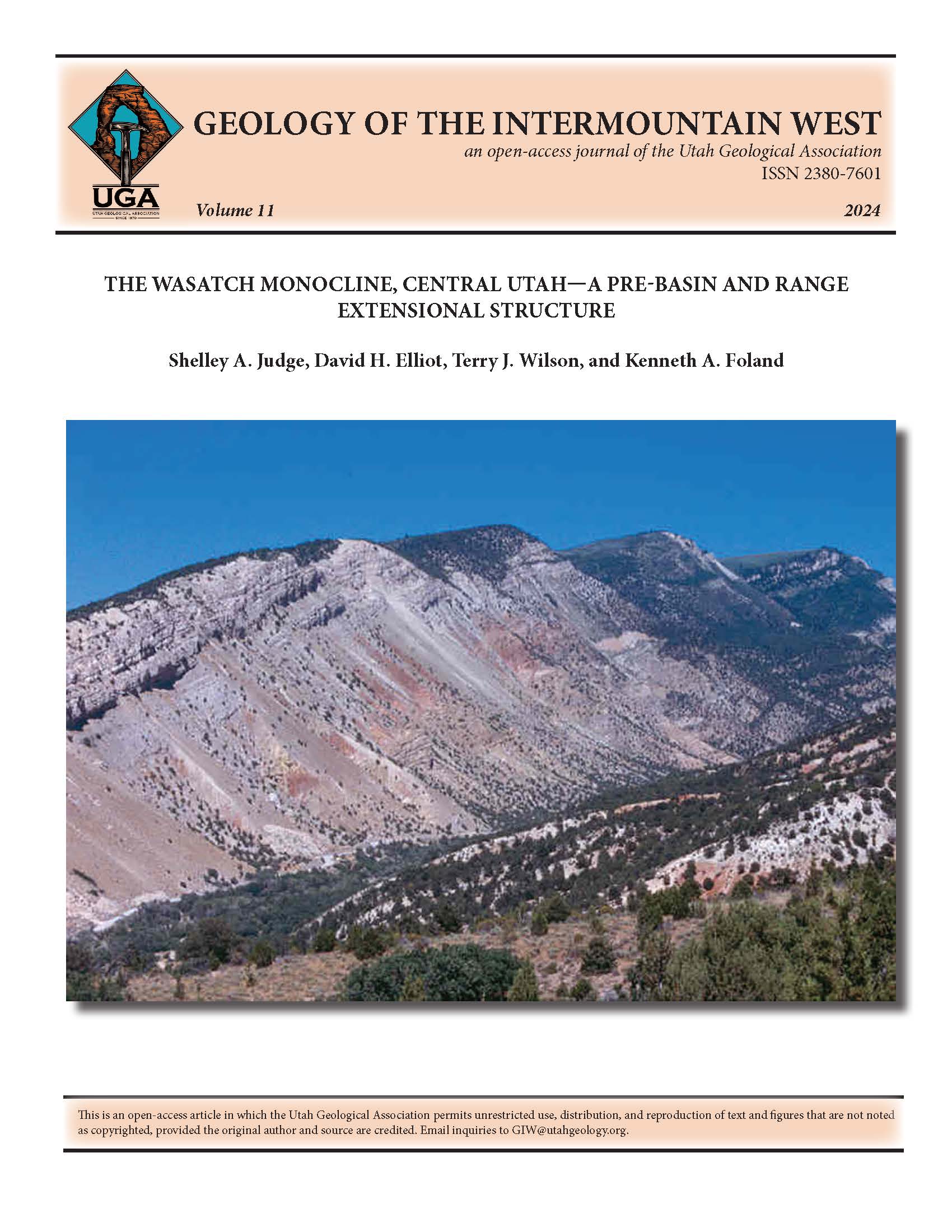The Wasatch monocline, central Utah—a pre-Basin and Range extensional structure
Abstract
The Wasatch monocline is a major structure in the transition zone between the Basin and Range and Colorado Plateau physiographic provinces. The timing of formation of the monocline and its tectonic significance has been the subject of debate because it is an anomalous structural style for central Utah. Constraining the age for flexure and outlining the tectonic regime responsible for Wasatch monocline formation are principal objectives of this research. Field mapping near the southern end of the monocline revealed an unconformity between the older, middle Eocene Crazy Hollow Formation, included in monocline folding, and the younger, middle Eocene (Bartonian) formation of Aurora deposited against the monocline. We report an incremental step-heating and direct single-grain laser fusion age of 38.0 ± 0.2 Ma for biotite from an ash-flow tuff within the formation of Aurora, which constrains monocline formation tO no younger than the mid-Eocene. Structural data from the Wasatch monocline, in the context of regional structural and tectonic analysis, indicate the monocline formed in an extensional regime as a forced fold or a rollover fold of the east-facing Sanpete half-graben, formed during pre-Basin and Range extension, also recorded in the Paleogene-Neogene basins of Utah Valley and Salt Lake Valley regions.





